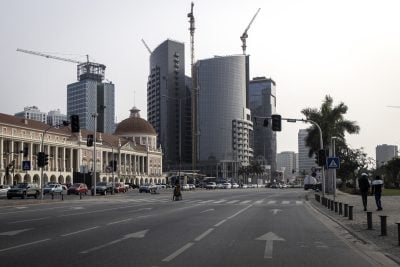Botswana is a favourite of investors and pundits; it has a history of stability unparalleled in sub-Saharan Africa, a strong economy, high levels of educational achievement, and very robust institutions – Botswana is rated by Transparency International as the least corrupt country in Africa.
Then there is Zimbabwe. President Robert Mugabe of Zimbabwe has his supporters, but his record as an economic manager is abysmal. Once one of sub-Saharan Africa’s most favoured investment destinations and most productive economies, Zimbabwe has crashed spectacularly in latter years under Mugabe, as agricultural land has been forcibly confiscated and redistributed by the state, leading to a collapse in all but subsistence farming, hyperinflation, and a world record level of unemployment. It is an extremely adventurous investor who is willing to risk investing capital in Zimbabwe today.
Botswana is strong, stable and safe. Zimbabwe is corrupt, chaotic and extremely risky. This is the consensus of economists and entrepreneurs from Africa and beyond. But it is this type of consensus that the Atlas of Complexity seeks to challenge. According to the complexity analysis, Botswana is very unlikely to grow rapidly in the foreseeable future. Zimbabwe on the other hand, is capable of rapid growth, as soon as political forces realign.
Just one look at the pattern of exports from both countries will help to explain why that is. Botswana has a very simple economy, one that is reflected in its exports. The Atlas uses ‘tree-maps’ of the export make-up of individual economies that show at a glance how diversified the economy is – assuming that the products that a country exports correlate roughly with what the economy produces. The Botswana tree-map tells its own story.
In the 2013 updated edition of the Atlas, the rankings of economic complexity are based on trade figures that go up to 2008 – according to Harvard, this is the latest date at which figures are reasonably reliable. The tree-map shows how dependent the Botswana economy is on one product, which is raw uncut diamonds accounting for two thirds of exports. Other unprocessed or part-processed metals account for another 20% of exports.
When it comes to Zimbabwe, the picture is very different – literally. Despite its deep economic difficulties, Zimbabwe remains a complex economy as demonstrated by its exports. And the Zimbabwe tree-map looks very different to that of its neighbour.
In the case of Zimbabwe one metal product – nickel – also accounts for the largest share of exports, but here the share is only 18%. A range of agricultural products account for around 25% of exports, but the product groups are quite widely diversified, including raw and processed products, foodstuffs and textiles. In addition to these, Zimbabwe also exports a surprising mix of rather complex products, including chemicals, instrumentation, electrical transformers and printed products. The illustration alone suggests that this is a much more diversified economy than that of Botswana.
Want to continue reading? Subscribe today.
You've read all your free articles for this month! Subscribe now to enjoy full access to our content.
Digital Monthly
£8.00 / month
Receive full unlimited access to our articles, opinions, podcasts and more.
Digital Yearly
£70.00 / year
Our best value offer - save £26 and gain access to all of our digital content for an entire year!

 Sign in with Google
Sign in with Google 


